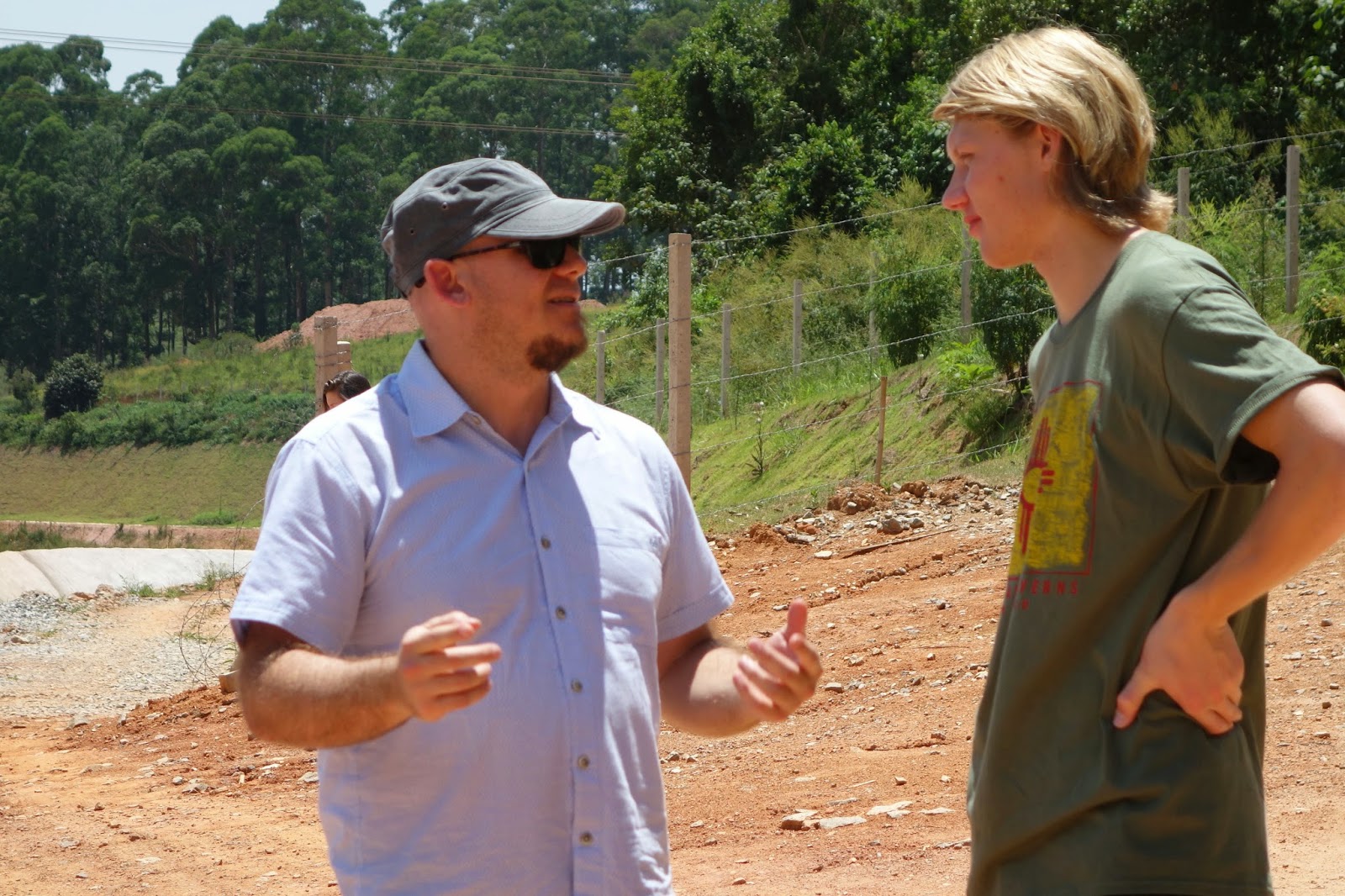 |
| Mark Ashby '16 with Professor Maurício Salles |
It’s been over a week now since the course in Brazil ended, and it’s been tough adjusting to normal life back in Cambridge. Learning about the course topic and how it related to Sao Paulo was fascinating, and I already miss it.
Like many others have mentioned, the site visits were very eye-opening. I especially liked hearing the views of the instructors at the different sites, who were experts in their field and always more than willing to answer our questions. It was interesting to hear their varied opinions on the outlook of Sao Paulo and what solutions they believe could make the biggest impact for the sustainability of the city. Specifically for me, it was great to learn more about green energy. I came into the course with little background in the topic, so I greatly appreciated the detailed explanations given on the manufacturing and installation processes of wind turbines and solar panels. For example, GE and Enercon allowed us to tour their warehouse facilities and see the whole operation involved in bringing their massive turbine blades and hubs into shippable products. Their technology is cutting edge, so it is rare for outsiders to get such a thorough look inside, and I feel very lucky. It was also interesting to see how the rival companies do things differently and to speculate on which might be better.
I definitely feel like the time in Brazil impacted my academic pursuits and career interests, which is exactly what I wanted to get out of the course. It also goes without saying that the Harvard/Poli-USP groups meshed very well over our short time together and created lasting friendships. Overall, it was an amazing experience.
 |
Natália de Ponte Rodriguez
6th-year |
It has been a week since the course's finished. It's not that much, but I really miss it. The site visits and the lectures were really great, and the people were amazing. I'm so happy we've got along so well! It made this experience to be unforgettable, and the bonds we created with each other during these 10 days together are priceless.
I really recommend every Poli student I know to apply for it. I've learned so much about so many things in such a short time! Professionals, professors and students were so open to talk and discuss about the problems we've been facing and have already faced in the past, it was very constructive.
I can say I have a different point of view after the course. It's mentally healthy to do what we did together. I appreciate it and I will remember this time we spent together with fondness. Thank you all!
 |
| DT, Natália, Rodrigo, Jenny & Anastasiya |




